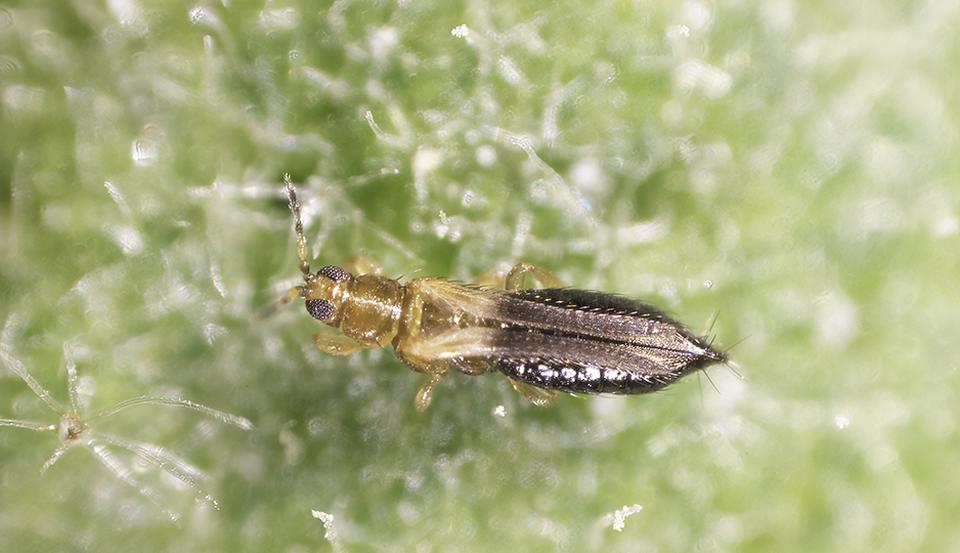
 The threats to Florida agriculture come in many shapes and sizes. Hurricane Ian was a massive storm stretching more than 100 miles wide that uprooted trees, destroyed nurseries and flooded groves. Meanwhile, developers purchase thousands of acres at a time to create new communities, wiping agricultural operations off the map. But one of the greatest threats we face can be as small as a millimeter. Invasive pests are tiny, but mighty enough to cripple an industry in a matter of days or weeks.
The threats to Florida agriculture come in many shapes and sizes. Hurricane Ian was a massive storm stretching more than 100 miles wide that uprooted trees, destroyed nurseries and flooded groves. Meanwhile, developers purchase thousands of acres at a time to create new communities, wiping agricultural operations off the map. But one of the greatest threats we face can be as small as a millimeter. Invasive pests are tiny, but mighty enough to cripple an industry in a matter of days or weeks.
Pepper thrips are an invasive species currently wreaking havoc in Florida. Ranging in size from one to four millimeters, they are difficult to see. They fly from plant to plant, curling leaves and sucking the sap. The damage restricts the plant’s growth and reduces crop yields.
Pepper thrips were first detected in Florida in 2020, and they are now affecting a wide variety of plants, including 43 species from 19 plant families, such as fiber crops, vegetables and ornamental plants in nurseries, farms and garden centers throughout South Florida. There is only one Florida grower currently under active quarantine to prevent the spread of pepper thrips, but since 2020 more than a dozen have been quarantined, preventing their products from moving during critical planting and landscaping times.
The Florida Department of Agriculture and Consumer Services Division of Plant Industry is working closely with Florida’s nursery and landscape industry to detect, intercept and control these damaging pests. We are grateful for the leadership of Commissioner of Agriculture Wilton Simpson and the agency’s inspectors and researchers in our war against pepper thrips. We’re also working with the University of Florida Institute of Food and Agricultural Sciences (UF/IFAS) to develop treatment options. But prevention is always better than a cure, which is why we must double down on our efforts to prevent pests from destroying our industry.
Florida is an international gateway for travel and trade. We boast 15 seaports and 19 commercial service airports that import goods to the Sunshine State every day from all over the world. While these ports of entry bring great benefits to our residents, businesses, and economy, they also introduce tiny insects, like pepper thrips, or plant diseases from other countries that pose a serious threat to agriculture. Florida’s Division of Plant Industry works closely with U.S. Customs and Border Protection and USDA-APHIS to inspect agricultural products coming to Florida before they reach our greenhouses, farms, groves and lawns.
When a pest does invade, it can be difficult to control and eradicate. When the pepper thrips were detected in Canada, growers found hope in the winter when colder temperatures would eradicate the insect from the region. In contrast, Florida’s warm climate enables these pests to thrive and multiply year-round.
In the war against pests and disease, we have a lot at stake. Agriculture is a $160 billion industry in the Sunshine State. There are more than 47,000 farms from Pensacola to Hialeah, most of which are small, family-owned farms that were established generations ago. Florida’s nursery and landscape businesses make up one of the largest sectors of the industry, contributing $31.4 billion to the economy each year and supporting more than 266,000 jobs for Florida families. We grow foliage, bulbs, roses and trees, and our professionals maintain the beauty that draws visitors from all over the world. When crops are destroyed by a pest or are restricted by quarantine, many of these businesses that operate on razor-thin margins will never recover and be forced to fold.
Florida’s nurseries and landscape businesses are on the front lines in the battle against many pests and diseases. Our nurseries, growers and landscape businesses invest significant resources in detection and prevention, as well as in research for disease-resistant varieties and control treatments.
We cannot fight this war alone. We rely on federal funding in the Farm Bill to support the research. We count on our partners at the Florida Department of Agriculture and Consumer Services to implement prevention protocols and UF/IFAS to identify treatments and cures. We also depend on Floridians. By being informed about the threat of pests and disease and remaining vigilant about the efforts in place for prevention, you can help.
___
Talmadge Coley is the CEO of the Florida Nursery, Growers and Landscape Association (FNGLA), the largest state nursery and landscape association in the nation.



